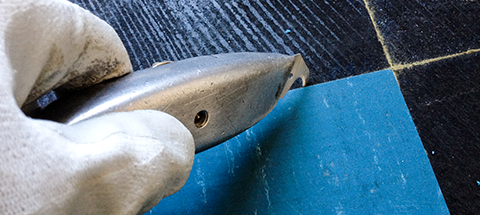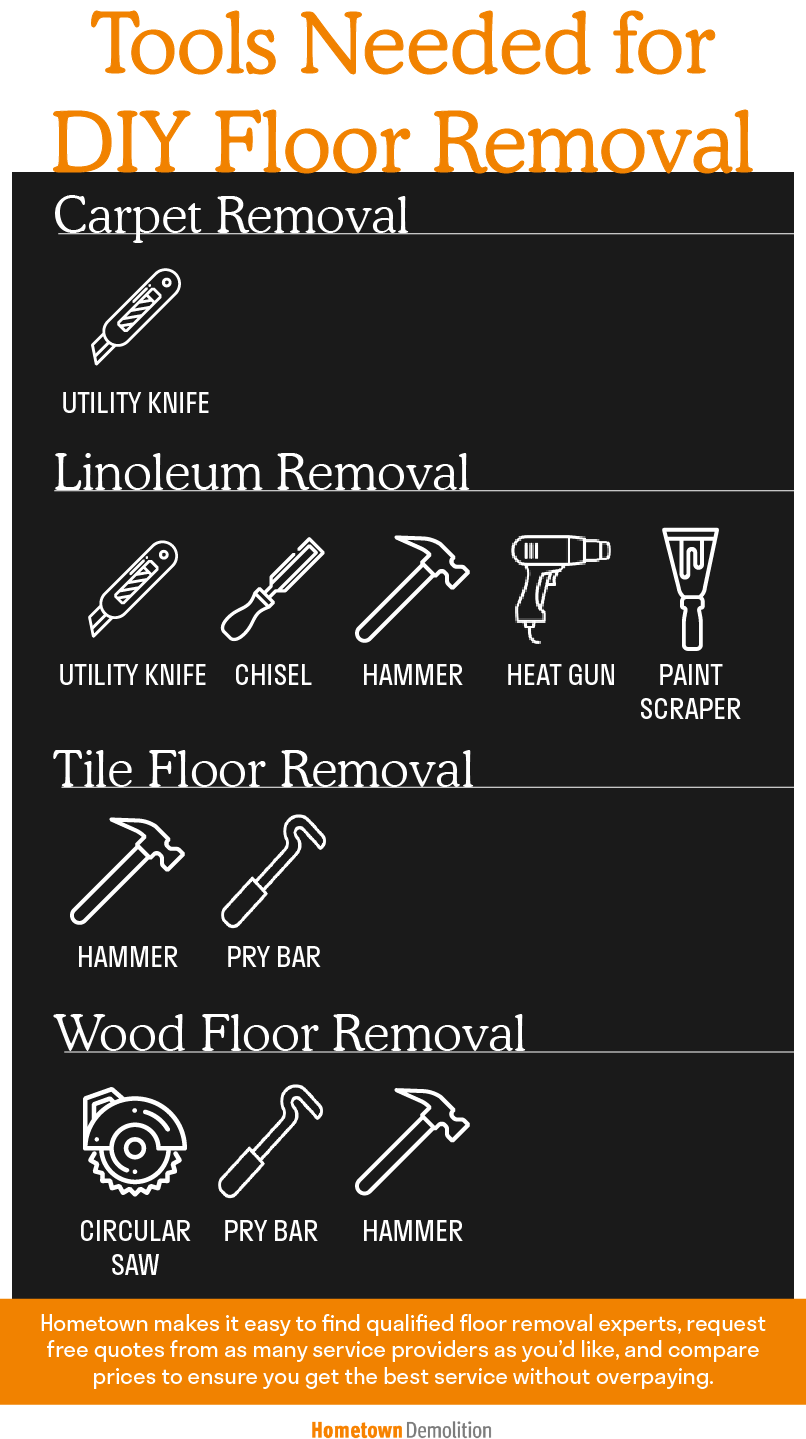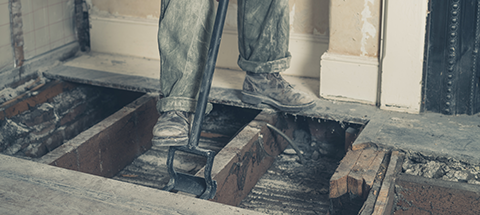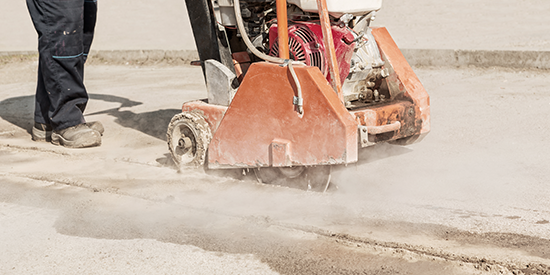
Updated January 24, 2023
Floor removal isn't an overly complicated project, but the steps of removal vary from one floor type to the next.
This guide will go over the basics of the most popular floor removal projects, when you might be able to do the floor removal yourself, and when it's best to hire a professional.
Jump to your floor removal type:
Find floor removal contractors in your hometown

Carpet Removal
If the carpet is salvageable, we recommend removing the carpet in one large roll.
Granted, this makes the removal more challenging, but it keeps usable materials out of the landfill.
Use a utility knife to cut the carpet along one edge of the room—this will be where you start rolling the carpet.
As you cut the carpet, be sure to fold the carpet back so you can also access the woven backing.
If the carpet is not salvageable, then the carpet can be cut as you go using a utility knife.
This will give you more manageable size pieces to remove.
Likewise, if you cut a border around the carpet, leaving roughly 5 inches to work with, you can lift out each section of the carpet easily, then pull up the border and tack strips at the end.
Keep reading:
- When Hiring a Contractor Saves You Money vs. Doing It Yourself
- Why You Should Never Pay Your Contractor Upfront
- 7 Keys to Successfully Hiring a Demolition Contractor
Linoleum Removal
With linoleum, you have the option to install new flooring on top if it’s still smooth, but we recommend removing and replacing it.
The removal process for linoleum will depend on the type of subfloor beneath it.
For example, if the linoleum or vinyl flooring is attached to a plywood subfloor, you can cut out the subfloor and flooring altogether, or you can scrape off the linoleum and glue.
If you decide to scrape the flooring off, we recommend cutting the linoleum or vinyl into roughly 6-inch wide strips to make them easier to break loose with a putty knife or brick chisel and hammer.
Once the old flooring is removed, you can use a paint scraper to remove the remaining glue.
Using a heat gun to soften the glue can help speed this process along.
If the adhesive is tar-based, you can soften it with mineral spirits.
If a hardwood floor lies beneath the linoleum, determine the direction the wood flooring runs by peeling away a corner of the linoleum.
Once you know which way the wood runs, cut your strips in the same direction as the wood to avoid cutting across the grain.
Once the resilient flooring is pulled away, you can use a heat gun to help scrape away the glue, just use caution so you don’t gouge or scratch the wood floor beneath it.
Once most glue is gone, you can then sand away the remaining glue and refinish the floor.
This same process can be used on concrete as well.
If you want to remove the subfloor with the flooring, you can determine the thickness of the flooring by drilling a hole into the floor to determine its thickness.
Then, you can adjust your saw blade to cut roughly 1/8-inch past the thickness.
Cut the floor into sections that are 3-4 ft long, and use a reciprocal saw, while avoiding the floor joists, to cut the floor flush with the walls.
Find floor removal contractors in your hometown
Tile Floor Removal
When removing tile floors, the first step is finding your starting point. Typically, a bare edge that meets cabinets or other semi-permanent fixtures is the best place to start.
Use a hammer and chisel to break out one tile to form the starting point if your tiles aren’t already broken, or use a pry bar if that is easier; it will depend on how the tiles are attached.
Once you’ve detached the first tile, you can continue prying up the rest of the tiles until they’re all removed.
Once all the tiles are gone, remove the underlayment if one is present. This will allow you to reach the subfloor.
Finally, remove any exposed nails and remaining debris.
Wood Floor Removal

Just like other floor removal projects, the method you use to remove old wood floors will depend on how they’re attached and whether or not you plan to salvage the wood.
The quickest way to remove wood floors is using a circular saw to cut the floors (with the wood grain) into manageable sections.
Once cut, you can use a pry bar and mallet or hammer to pry up the wood floors.
Once all planks are removed, use a nail claw and curved vice grips to pull out any staples in the subfloor.
We recommend using a large magnet to be sure you’ve picked up all staples.
To salvage the wood planks, carefully pry up the boards by inserting the pry bar beneath the board and lifting it just barely.
Then, move further down the plank, and lift that section slightly, and so on and so forth until the entire plank is removed in one piece.
Trying to pry up too much of the plank at once can lead to it splitting or becoming damaged, so take your time and don’t rush the process.
When it comes to floor removal, you typically just need a few tools, some elbow grease, and willpower to see the often labor-intensive job through yourself.
If you have any doubts about your ability to safely remove your floors yourself or you simply would rather have a professional handle the dirty work, turn to a floor removal contractor to get it done.
Find floor removal contractors in your hometown
Find out more:


